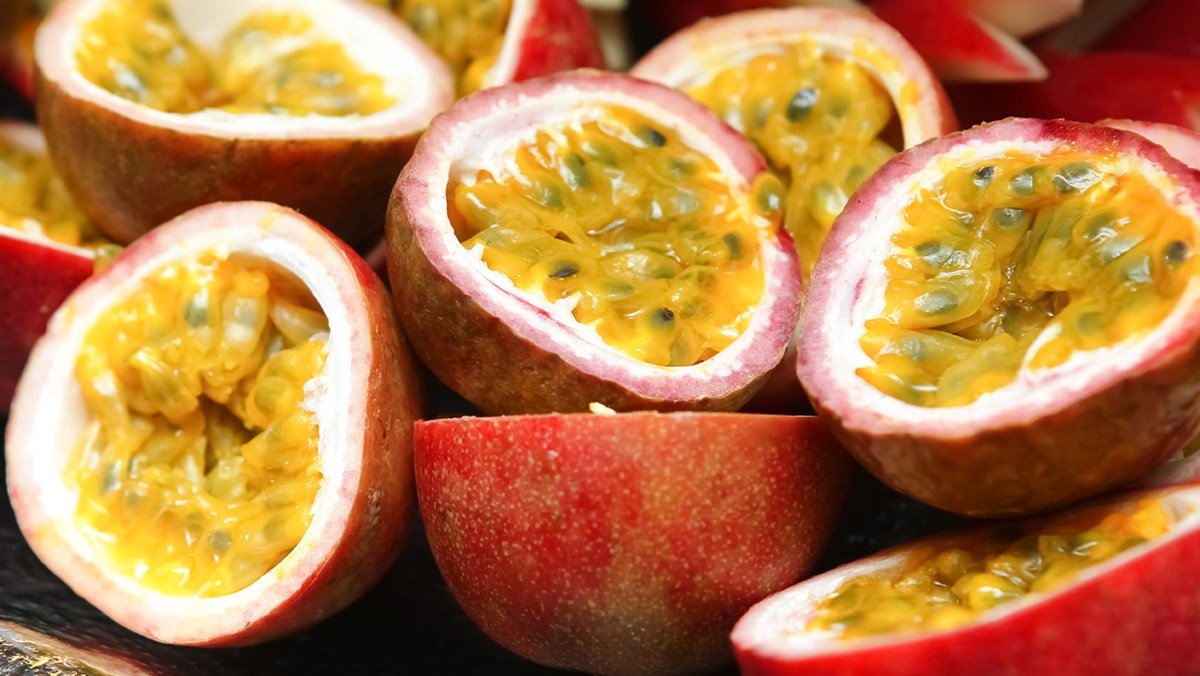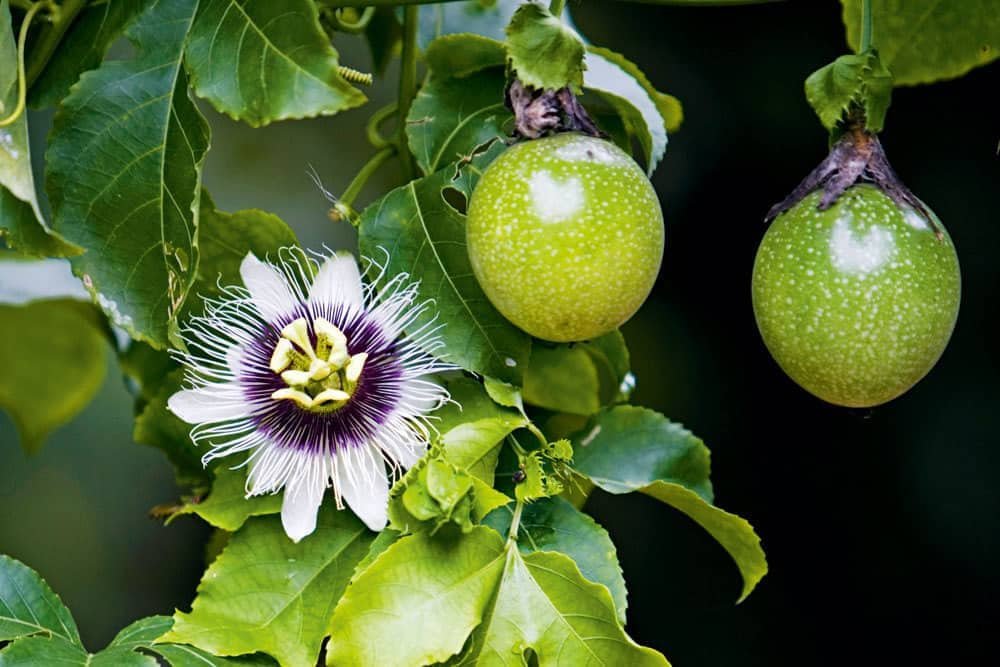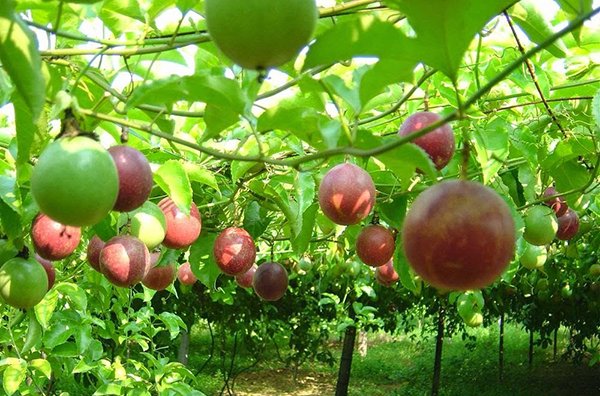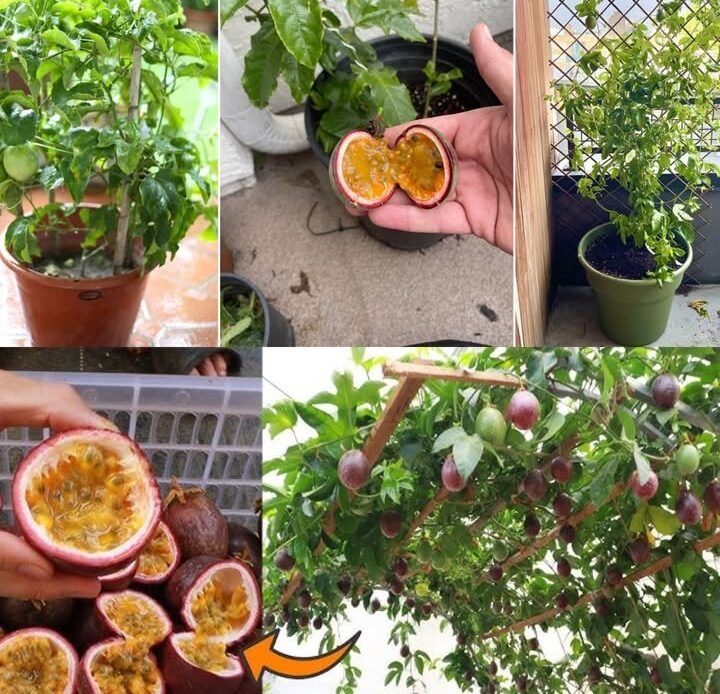Passion fruit is a delicious and exotic tropical fruit that can be grown right in your backyard or even in a container on your balcony. Many people believe that passion fruit requires extensive gardening knowledge, but the truth is, with the right techniques, you can cultivate a thriving passion fruit vine at home. In this guide, we will uncover the secrets to successfully growing passion fruit, including what most gardeners won’t tell you.
## Why Grow Passion Fruit at Home?

Growing passion fruit at home offers several benefits, including:
– **Fresh, organic fruit**: Store-bought passion fruit may be treated with chemicals, but growing your own ensures a natural harvest.
– **Cost savings**: Passion fruit can be expensive in stores, so cultivating your own is a budget-friendly option.
– **Beautiful, fragrant vines**: Passion fruit plants not only produce delicious fruit but also serve as attractive climbers, enhancing your garden’s aesthetics.
– **Health benefits**: Packed with antioxidants, fiber, and essential vitamins, passion fruit is a nutritious addition to your diet.
## Choosing the Right Passion Fruit Variety
There are two main types of passion fruit:
– **Purple Passion Fruit (Passiflora edulis)** – Best suited for cooler climates, producing smaller but sweeter fruit.
– **Yellow Passion Fruit (Passiflora flavicarpa)** – Thrives in warm and tropical conditions, yielding larger, tangy fruit.
Selecting the right variety ensures better adaptability to your climate and a successful harvest.
## Selecting the Right Container
If you’re planning to grow passion fruit in a container, the right pot is crucial. Here’s what you need to know:
– **Size:** Choose a pot that is at least 15-20 gallons in capacity and at least 18 inches deep to allow root expansion.
– **Drainage:** Ensure the container has drainage holes to prevent root rot.
– **Material:** Plastic, clay, or wooden containers all work, but avoid heavy ceramic pots that may be difficult to move.
## The Best Soil for Passion Fruit

Passion fruit vines thrive in well-draining, nutrient-rich soil. Use a mix of:
– **Potting soil**
– **Compost for added nutrients**
– **Sand or perlite for better drainage**
Aim for slightly acidic soil with a pH between **6.5 and 7.5** to promote healthy growth.
## Planting Passion Fruit
You can grow passion fruit from seeds or seedlings. Here’s how:
### **Growing from Seeds**
1. Extract seeds from a ripe passion fruit and rinse them thoroughly.
2. Soak the seeds in warm water for 24 hours to soften the outer layer.
3. Plant seeds about **½ inch deep** in a small pot with moist soil.
4. Keep the soil consistently moist and place the pot in a warm location.
5. Germination can take **10-20 days**.
### **Growing from Seedlings**
1. Purchase a healthy passion fruit seedling from a nursery.
2. Gently remove it from its original pot and loosen the roots.
3. Plant in your prepared container, ensuring the base of the plant is level with the soil surface.
4. Water thoroughly after planting.
## Providing Proper Support
Passion fruit vines need a trellis or other support structure to climb. Here are some options:
– **Wooden or metal trellises**
– **Fencing**
– **Wire mesh**
– **Garden arches**
Place your support system in a **sunny** area where the vine can grow freely.
## Sunlight and Watering Requirements
– **Sunlight**: Passion fruit needs **6-8 hours** of direct sunlight daily.
– **Watering**: Keep the soil **moist but not soggy**. Water **2-3 times per week**, increasing during hot weather.
## Fertilizing Passion Fruit Vines

To ensure a bountiful harvest, use the right fertilizer:
– **High potassium fertilizer (10-5-20) every 2-4 weeks**
– **Compost or organic mulch** to maintain soil moisture and provide nutrients
– **Avoid excessive nitrogen** to prevent excessive foliage growth at the expense of fruit production
## Hand Pollination for More Fruit
Passion fruit vines are self-pollinating, but **hand pollination** can increase yields. To hand-pollinate:
1. Use a small brush or cotton swab.
2. Collect pollen from the stamens of a flower.
3. Transfer the pollen to the stigma of another flower.
## Protecting Your Passion Fruit Vine from Pests and Diseases
Common issues include:
– **Aphids & Spider Mites** – Spray with neem oil or insecticidal soap.
– **Root Rot** – Ensure proper drainage and avoid overwatering.
– **Fungal Infections** – Improve airflow and remove infected leaves.
## Harvesting Your Passion Fruit
– Fruit ripens in **12-18 months**.
– Pick when **wrinkled and slightly soft**.
– Passion fruit will drop from the vine when fully ripe.
## Final Tips for Success

– **Prune regularly** to remove dead growth and encourage fruiting.
– **Protect from frost** by moving potted plants indoors or covering outdoor vines.
– **Rotate feeding schedule** between organic compost and fertilizer to keep the plant nourished.
## Enjoying Your Homegrown Passion Fruit
Now that you have successfully grown your own passion fruit, enjoy it in:
– Smoothies
– Salads
– Desserts
– Juices
By following these tips and tricks, you’ll have a thriving passion fruit vine yielding delicious fruit year after year. Happy gardening
